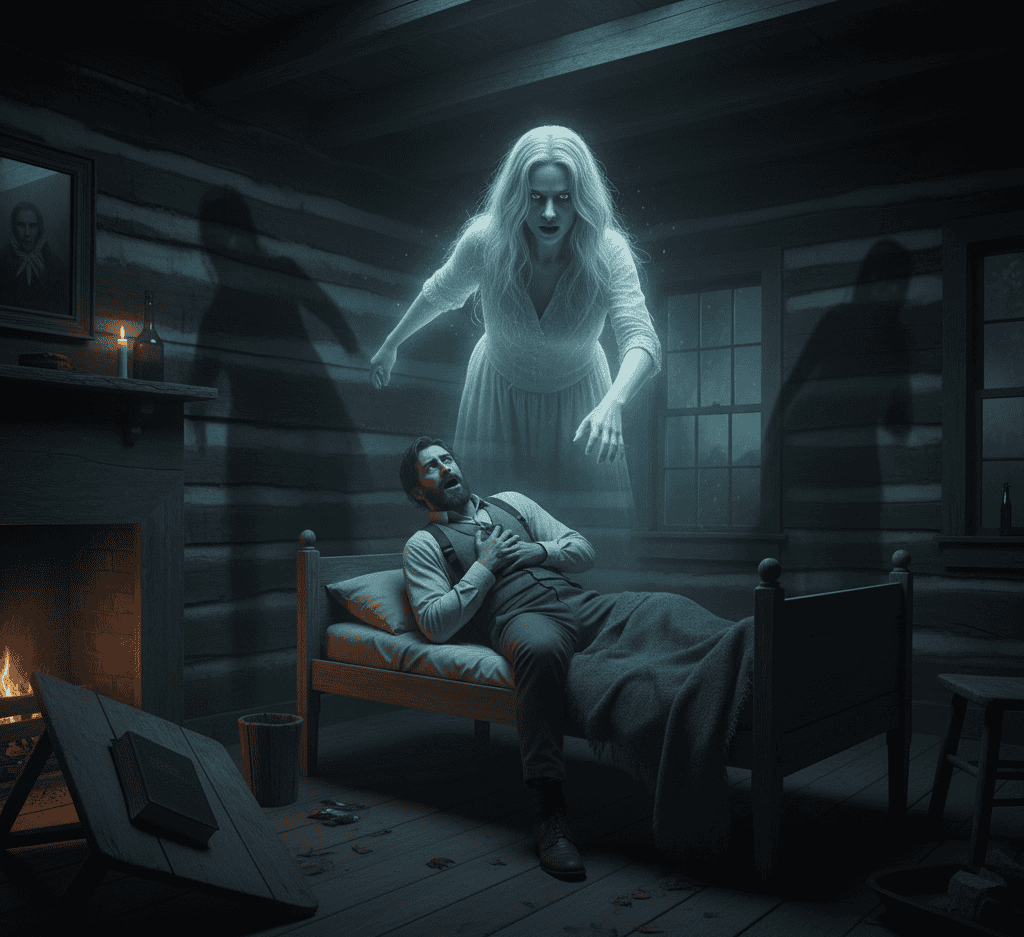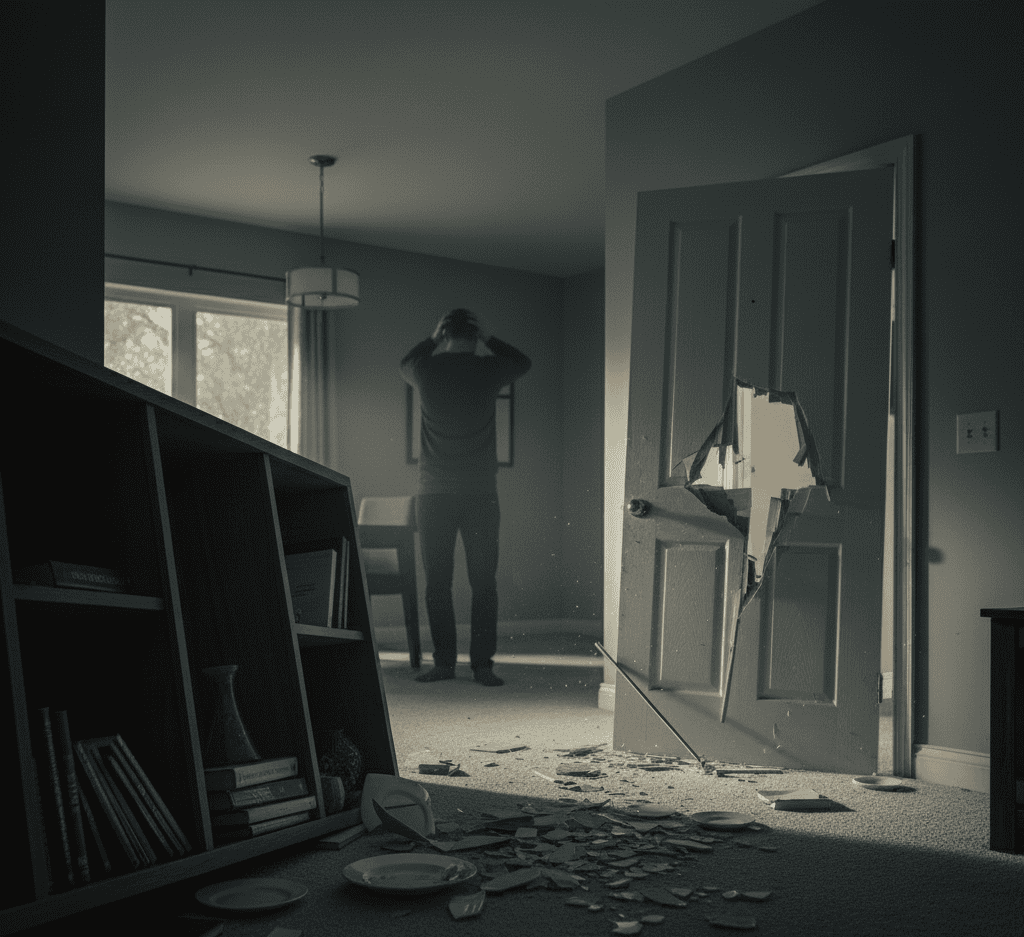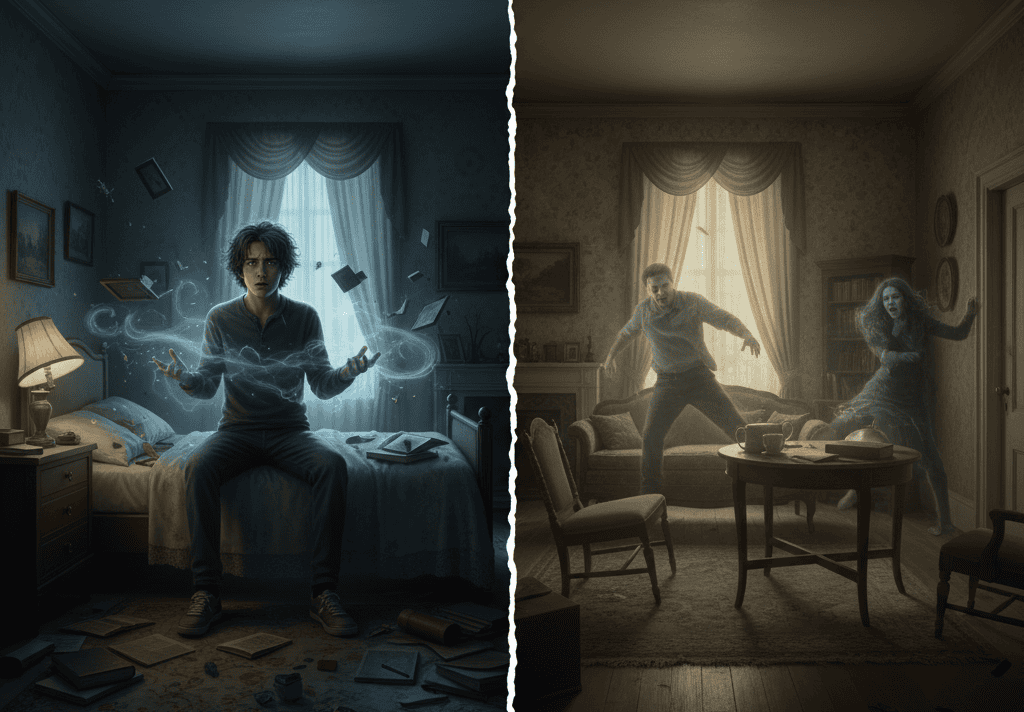Suburban life is supposed to be peaceful. Neatly cut lawns, quiet streets, neighbors who wave politely as they collect the mail.
But sometimes, behind those calm facades, something unexplainable starts to stir. Lights flicker without reason. Furniture slides across the floor. A family dog barks at empty corners.
The word poltergeist comes from German, meaning “noisy spirit,” and that’s exactly what these entities are known for—mischievous, chaotic, and loud.
While skeptics call them tricks of the mind, history tells a few stories that are much harder to explain away.
Here are some of the suburban hauntings that made even the most ordinary neighborhoods tremble.
The Enfield Disturbance
In 1977, a quiet street in Enfield, a suburb of London, became the center of one of the most famous poltergeist cases in the world.
The Hodgson family, a single mother and her four children, claimed strange things were happening in their modest home.
Furniture moved by itself. Knocking sounds echoed through the walls. Toys flew through the air as if thrown by invisible hands.
The activity seemed to focus on the two daughters, Janet and Margaret, who were often the witnesses to the most disturbing events.
Neighbors, journalists, and even police officers said they saw objects move without explanation.
A policewoman once swore she saw a chair slide across the floor by itself. Soon, paranormal investigators from the Society for Psychical Research arrived.
Maurice Grosse and Guy Lyon Playfair recorded voices, photographs, and audio of the haunting.
The voice that supposedly came through Janet’s mouth was deep, raspy, and claimed to belong to a man named Bill who had died in the house years before.
Skeptics later argued that the girls had faked the incidents for attention. But Grosse maintained until his death that what he saw was real.
The Enfield case inspired movies, documentaries, and countless debates.
Whether it was a ghost, a prank, or something in between, one thing was certain — the quiet suburban street of Enfield would never be the same.
The Bell Family Mystery
Traveling back a little further, to the early 1800s, the Bell family haunting in Tennessee remains one of the earliest and eeriest examples of poltergeist activity in America.
Though not exactly a suburb by today’s standards, the Bells were respected members of their small rural community until something in their home began to turn that calm life upside down.
It started with scratching and tapping sounds inside the walls. Soon, strange voices echoed through the rooms.
The family described hearing laughter, whispers, and sometimes even a woman’s voice singing hymns.
The entity grew more aggressive over time, targeting John Bell, the father, with physical attacks and taunts.
Neighbors were invited to witness the phenomena, and many claimed to experience the same chilling encounters.
What made this case different was the intelligence of the spirit. It seemed to respond to questions, predict events, and carry on full conversations.
The “Bell Witch,” as it came to be called, allegedly even caused John Bell’s death by poisoning him.
While some called it superstition, others insisted something dark had truly invaded the Bell home.
The legend still haunts the small town of Adams, Tennessee, where locals whisper that the Bell Witch Cave remains a hotspot of paranormal energy.
The Herrmann House in Long Island
The story that gave birth to the phrase “poltergeist activity in suburbia” came from Long Island in 1958.
The Herrmann family lived an ordinary life until bottles began to pop open on their own.
Milk, shampoo, bleach, even holy water bottles were suddenly found uncapped, their contents spilled.
The phenomenon spread quickly. Objects would fly across the room or fall off shelves for no reason.
Terrified, the family called the police. Officers arrived, saw things move, and confirmed that something strange was happening.
For weeks, the house was a scene of chaos. Books jumped from tables. Knick-knacks soared through the air. Investigators from all over the country visited the home, searching for answers.
When the family’s teenage son, Jimmy, went away to visit relatives, the activity suddenly stopped.
That led some to believe that his adolescent energy had triggered the events.
Many experts think that poltergeists are not ghosts at all, but bursts of psychic energy from humans, usually young people going through emotional stress.
In that sense, the “haunting” might have come from within the house, but not from beyond the grave.
The Herrmann case became a media sensation and later inspired the 1982 horror film Poltergeist.
While the real family never claimed to see a ghostly figure, they could never forget the months of noise, movement, and fear that shattered their suburban peace.
The Thornton Road Incident
In the 1980s, a quiet cul-de-sac in Columbus, Ohio, became the unlikely setting for another strange haunting.
The residents, the Andrews family, reported small disturbances at first. Like the sound of running water when no faucets were on, footsteps in empty rooms, and television channels changing by themselves.
But things soon escalated. Plates shattered midair. Bedroom doors slammed so violently that the hinges broke.
One night, a bookshelf was thrown across the room while everyone was sitting in the living room.
Paranormal investigators who came to study the house found that most activity centered around the couple’s teenage daughter, Emily.
She described hearing voices whispering her name and feeling sudden temperature drops.
Neighbors also claimed to hear loud bangs and screams coming from the house, even when no one was home.
After months of fear, the family moved out, but reports say the next owners lasted less than a year before selling the home again.
No official explanation was ever found. Some believed Emily’s emotional turmoil had triggered the haunting, much like in the Herrmann case.
Others thought the land itself might have carried an energy that refused to stay quiet. Either way, Thornton Road became one of those local legends people spoke of in low voices, with more than a little unease.
What Poltergeists Might Really Be
Every culture has its version of the noisy ghost — from mischievous household spirits in Europe to angry ancestors in Asia.
But modern paranormal research offers a few different theories. One idea is that poltergeists are actually psychic projections.
Strong emotions, especially from teenagers or highly stressed individuals, might cause bursts of energy that move objects or create sounds.
It’s less about a ghost haunting a person and more about a person unknowingly haunting themselves.
Another theory is that poltergeists are a kind of echo. Energy from traumatic or emotional events might remain trapped in an environment, replaying itself like a record stuck on one note.
Then there’s the more spiritual view that these are actual spirits, frustrated or mischievous, trying to communicate in the only way they can.
No matter which idea you prefer, the stories share one truth: once a poltergeist starts, it’s almost impossible to ignore.
It’s loud, it’s frightening, and it doesn’t seem to care whether you believe in it or not.
Maybe that’s what makes suburban hauntings so unsettling. Ghost stories often belong to castles, cemeteries, or ancient ruins.

Sempre senti uma forte ligação com o Divino desde o meu nascimento. Como autora e mentora, a minha missão é ajudar os outros a encontrar o amor, a felicidade e a força interior nos momentos mais sombrios.






